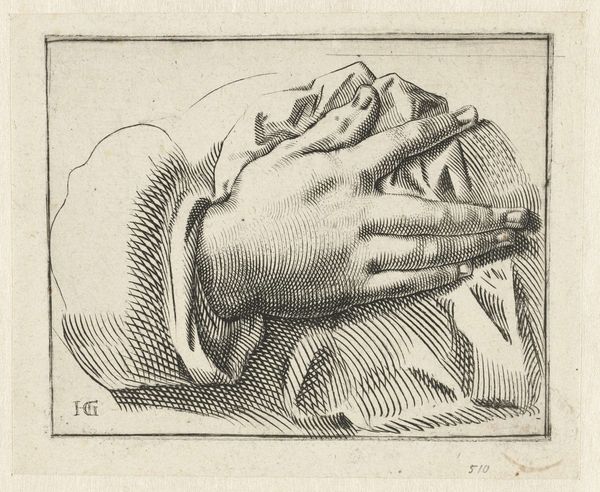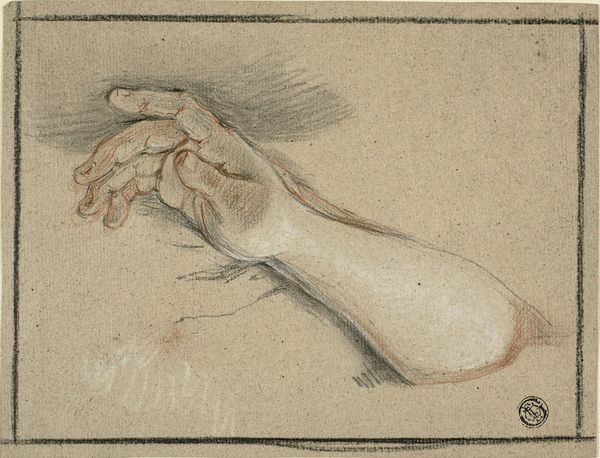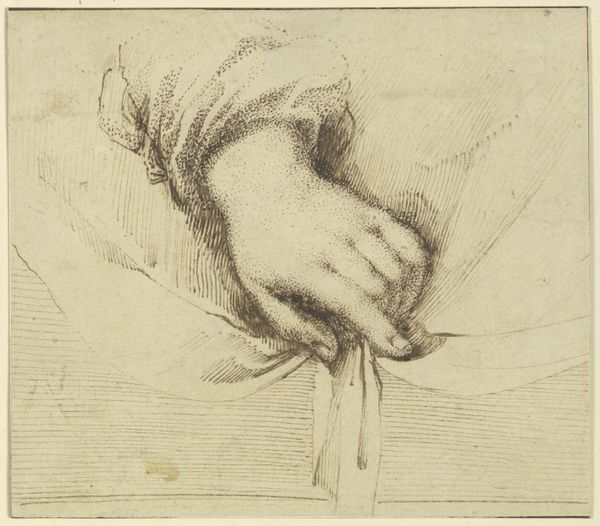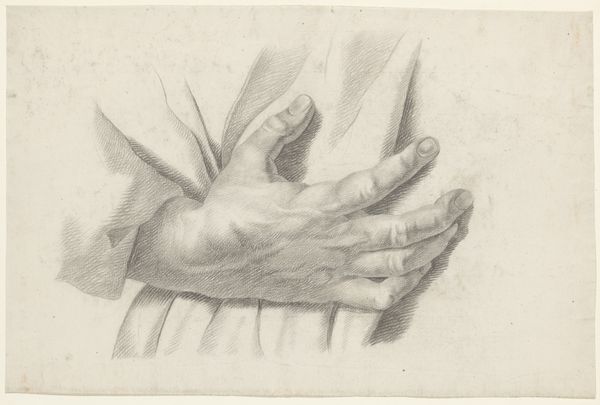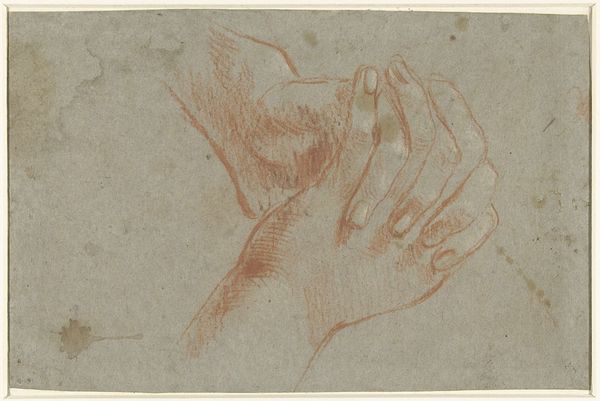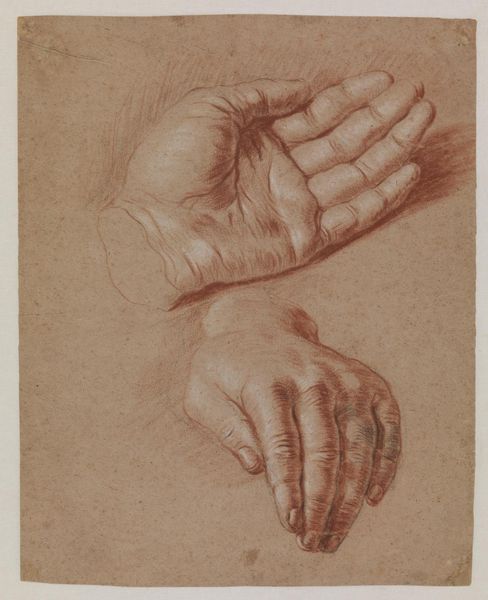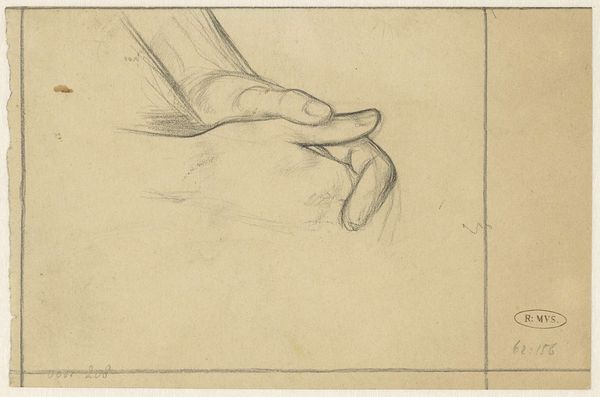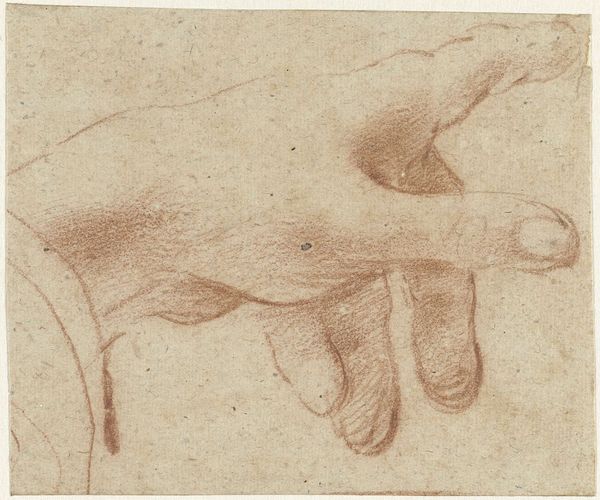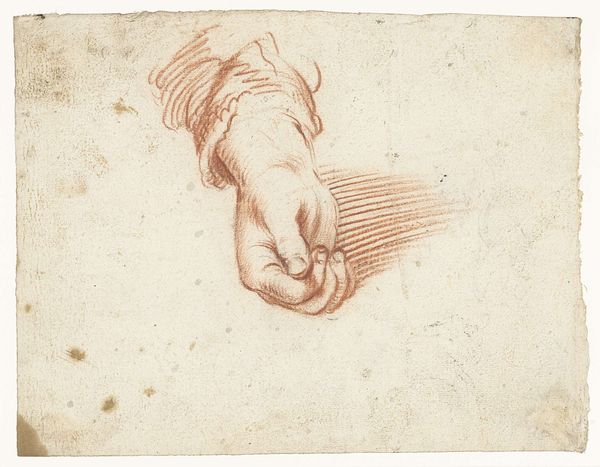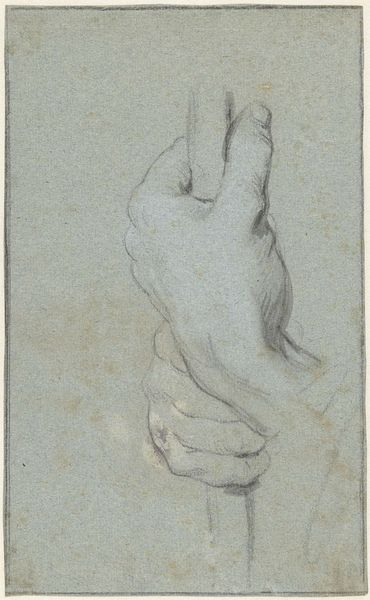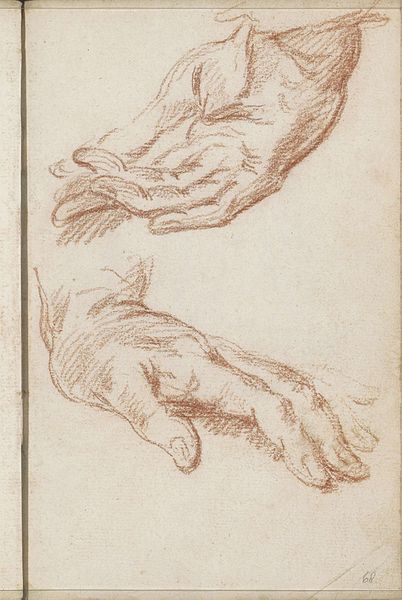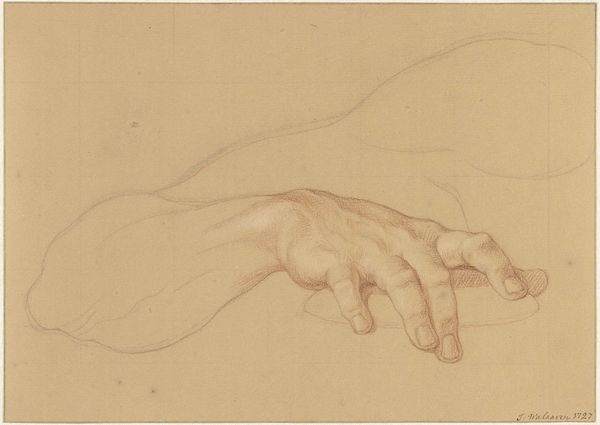
drawing, pen
#
drawing
#
dutch-golden-age
#
figuration
#
11_renaissance
#
pencil drawing
#
pen
#
academic-art
Dimensions: height 130 mm, width 193 mm
Copyright: Rijks Museum: Open Domain
Gerard ter Borch the Younger made this study of a left hand with pen in brown ink, likely in the Netherlands during the mid-17th century. It’s a fascinating demonstration of the draughtsman’s skill, but beyond this, what could a drawing like this tell us about the world in which it was made? Artists in the Dutch Golden Age were increasingly free from aristocratic or religious patronage, and were more reliant on the open market for their livelihoods. The art market in the Netherlands at this time was booming and there was a growth in the market for drawings. Sheets like this were produced as studies for larger paintings, or as independent works of art in their own right. The artist has skillfully rendered the hand and the folds of drapery using a complex system of hatching and cross-hatching. To better understand this drawing, we might investigate how the institutional structures of the art market shaped ter Borch’s artistic production. Scholarly catalogues and archival records of sales can offer valuable insight into the artistic networks and economic conditions that made this study possible. Ultimately, it is this historical context that provides a richer understanding of the drawing’s significance as an object of artistic and economic exchange.
Comments
No comments
Be the first to comment and join the conversation on the ultimate creative platform.
